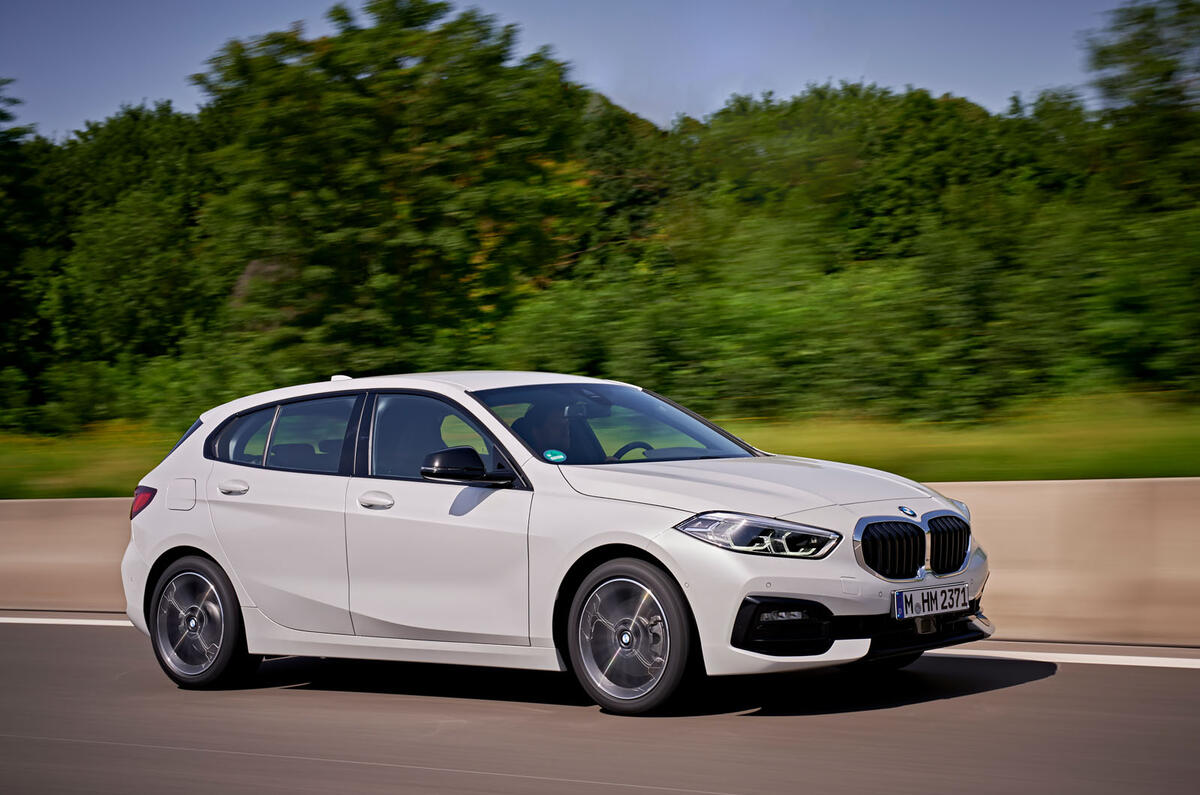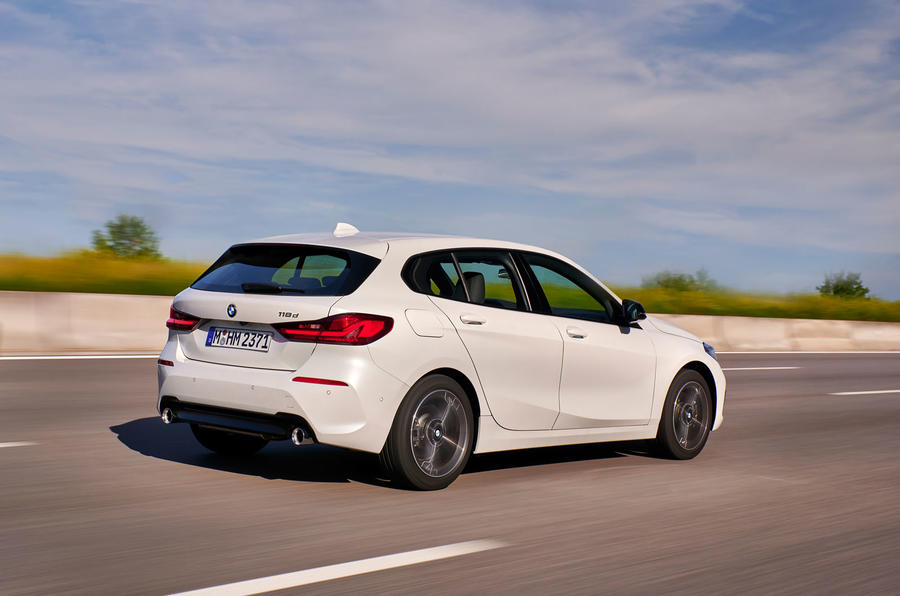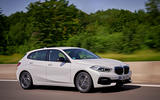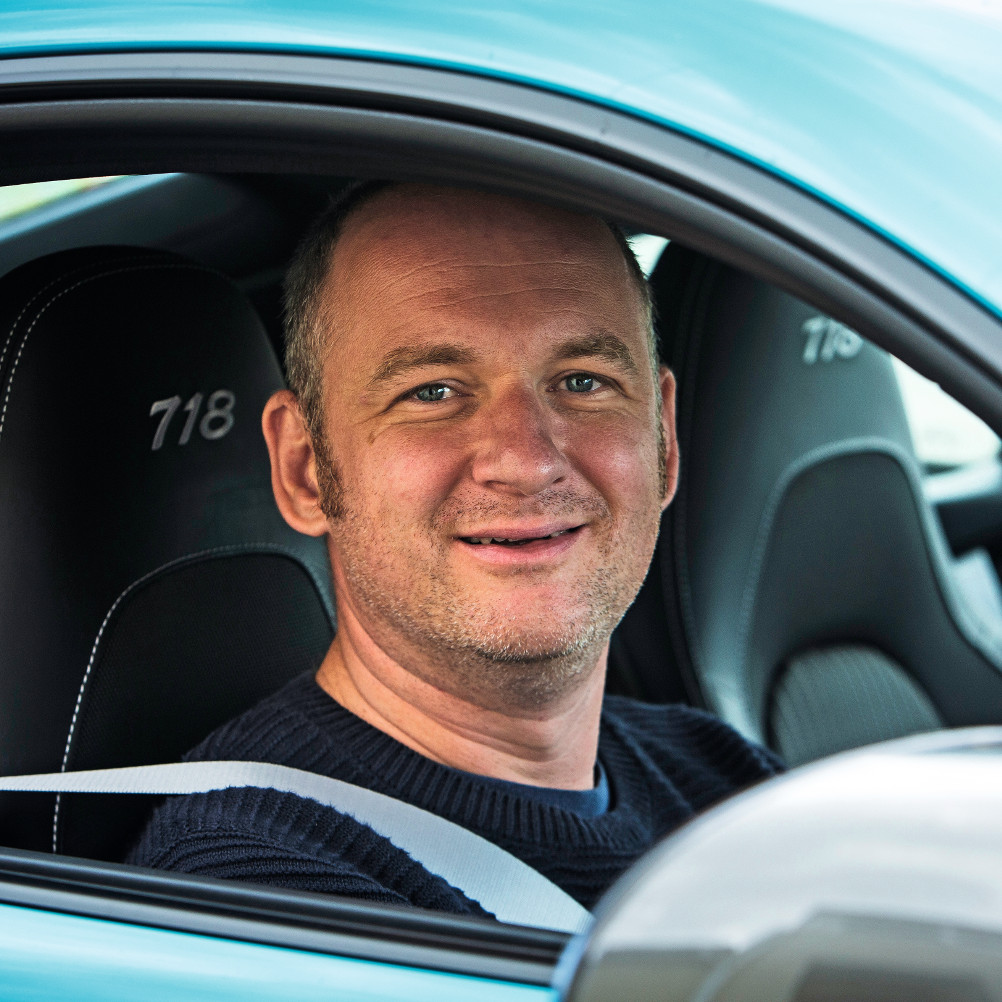What is it?
It’s the all-new (and here comes the controversy) front-wheel-drive BMW 1 Series in its likely best-selling form. We’ve known this change in mechanical layout has been on the cards for a while now. We’ve even had the chance to sample a pre-production version and came away impressed. Even so, it’s taking some time to come to terms with the seismic philosophical shift under the skin.
Yet is it as bad as all that? Not only did most BMW 1 Series customers (85% by the brand’s own count) not have the foggiest whether they were being pushed or pulled, the lower-powered models weren’t all that invigorating in reality. Sure, steering uncorrupted by torque fight was nice but, in general, most versions had much more grip than grunt, making it difficult to exploit the unique-to-the-class transmission layout.
Underpinning the new 1 Series is BMW’s latest FAAR (it’s essentially an acronym for an extremely difficult-to-pronounce German phrase for ‘front-wheel-drive architecture’) platform. Featuring struts at the front and a multi-link rear axle, it also comes with optional adaptive dampers for the first time. Using a mix of aluminium and high-strength steel, the whole car is around 25kg lighter than the model it replaces and the wider track and 20mm-shorter wheelbase hint at the extra agility BMW claims to have engineered in.
Power comes from the familiar 148bhp 2.0-litre four-cylinder diesel, which drives the front wheels (there, said it again) through a standard six-speed manual gearbox, although our test car has the optional eight-speed automatic. Lower-powered petrol and diesel models are also available with a self-shifter, but just to make things a little less straightforward, it’s a seven-speed dual-clutch gearbox.
Inside is the latest high-tech iteration of the traditional driver-focused BMW wraparound dashboard. There’s the usual array of screens, with our car’s optional 10.25in (an 8.8in layout is standard) infotainment display accessed via either the touch-sensitive screen or the intuitive iDrive rotary controller. There’s also a familiar line-up of connected and live services, plus the effective ‘Hey, BMW’ voice control that mimics a similar system used in the Mercedes-Benz A-Class. And, of course, quality is top notch, with details such as the knurled metal-effect ventilation controls and top-to-bottom use of soft-touch materials bostering the car’s premium credentials.
It’s also more spacious than before, with an extra 33mm of leg room and 19mm of head room, making the 1 Series a viable choice for four tall adults for the first time. And the larger, 380-litre boot (up 20 litres) means they can all bring along their luggage now. There’s more elbow room all round, too, so those in the front don’t feel as hemmed in.



















































Join the debate
Add your comment
RIP BMW.
RIP BMW.
Looks like Kia
Is it me or does the front end look like a Kia?
Exterior styling is poor, but I am ok with FWD as the previous model did not offer much in the second row.
RWD traditionists will reject
Those who care about looks will likewise give this a miss.
And premium manufacturers can nolonger claim better build quality and higher grade materials in their mass market cars.
I really can't make a case for this or the A class or the Audi A1 / A3
abkq wrote:
But surely, how could you resist one of those 3 wonderful badges on your driveway for your neighbours to envy.......